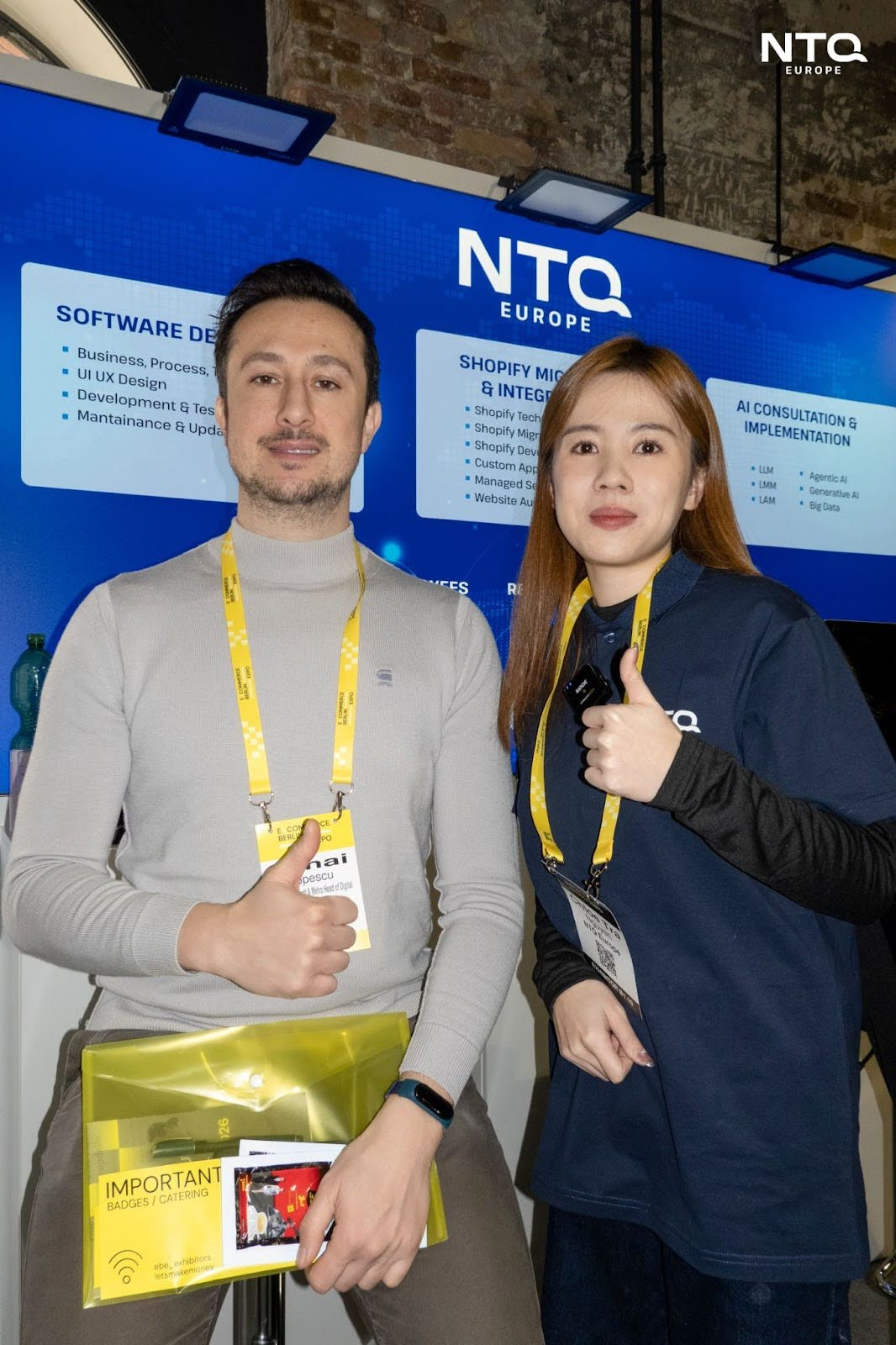Why Big Retailers Struggle in E-commerce
For many large retailers, failure in e-commerce doesn’t stem from a lack of resources but from a fundamental disconnect with customer needs.
Ep 3 NTQ Europe Insight Series in E commerce Berlin Expo
As Mihai explained, businesses often struggle to benchmark themselves effectively against dominant marketplaces. They overlook how to serve customers better, differentiate through experience, and select the right technology stack and marketing tools to support that ambition. This misalignment between strategy, technology, and customer expectations can erode competitiveness faster than most organizations realize.
NTQ Europe’s experience supporting digital commerce projects makes it clear that successful brands design every touchpoint around their customers’ evolving so with agility and intent.

Lessons from Failure: The Case of Galeria
Galeria’s story serves as a stark example. After merging with a competitor, the iconic department store had a pivotal opportunity to reinvent its digital presence. However, the technology platform for this transformation failed to match the complexity, flexibility, and customer-centric functionalities that leading competitors delivered.
The result was a critical gap between what the brand offered and what the market demanded. It’s a reminder that technology decisions in e-commerce must be forward-looking, not just based on immediate operational needs. Choosing the wrong platform can mean missing the opportunity to create seamless, innovative experiences that today’s customers expect — and tomorrow’s competitors will demand even more fiercely.
The Foundation for Future Growth: Investing in Customer Data Platforms
Mihai pointed out one of the biggest oversights is the lack of robust Customer Data Platforms (CDPs) among traditional retailers.
A CDP provides the essential infrastructure for building customer experience strategies: it collects data across multiple touchpoints, unifies it, and enables personalized engagement at scale.
Without it, even the most sophisticated e-commerce fronts become disconnected islands.
In NTQ Europe’s digital commerce work, we consistently see that brands can orchestrate data seamlessly and activate it meaningfully to move from transactional selling to relationship-driven growth.
The Transformative Role of AI and Automation
AI’s impact on retail is often framed around generative tools. Still, Mihai emphasized that operational AI—automating campaigns, optimizing offers, and delivering real-time personalized experiences – holds even more transformative potential.

By applying AI smartly, retailers can create dynamic, responsive journeys where each customer feels recognized and valued — not simply segmented by broad categories.
Automation does not produce manual work and enhances creativity by allowing marketing and product teams to focus on crafting richer, more empathetic experiences.
This philosophy aligns closely with how NTQ Europe approaches digital transformation: using technology for efficiency and humanizing and elevating every customer interaction.
Winning Strategies: Building Technology with the Customer in Mind
Choosing the right technology stack is essential — but Mihai cautioned that success isn’t only about having “best-of-breed” tools.
It’s about how those technologies integrate and, more importantly, how they shape the customer’s perception and experience.
Every architectural decision—from microservices frameworks to API integrations—must ultimately improve user interactions by making them smoother, faster, and more rewarding.
In today’s competitive environment, building isolated excellence is not enough. Winning in digital commerce requires orchestrated, end-to-end excellence: backend reliability, frontend delight, and a strategic vision tying every element together.
Conclusion: A Human-Centric Future for Digital Commerce
Mihai Popescu’s insights offer a timely reminder that technology is a foundation, but customer understanding is the compass.
Retailers who align the two—investing in flexible architectures, intelligent automation, and authentic, data-driven personalization—will build not just transactions but lasting brand loyalty.
For brands ready to lead in the new digital economy, success won’t come from technology alone. It will come from a commitment to serving customers better, faster, and more meaningfully at every stage of their journey.
👉 Explore how NTQ Europe empowers digital commerce transformation
👉 Talk to our experts about scaling your digital experience
Transform faster. Connect deeper. Build smarter — with NTQ Europe.



















